It so happened that the breed poultry farming in general and gezzles in particular - this is also the combination of like-minded people, something like the club in interest. For example, we traveled all the nearest and other areas with a comrade in search of unrelated manufacturers. We were looking for in our country and in Ukraine. So it turns out that thanks 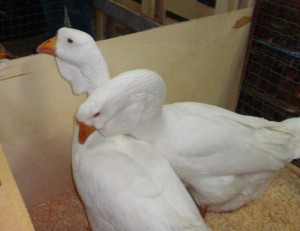 gussey met with many interesting people, visited many places. True, it was now difficult to engage in breed gezzles. Very little left breeders, rarely holds a purebred bird. Elderly lovers of lovers depart the department, and the youth of interest does not show.
gussey met with many interesting people, visited many places. True, it was now difficult to engage in breed gezzles. Very little left breeders, rarely holds a purebred bird. Elderly lovers of lovers depart the department, and the youth of interest does not show.
I myself was born and live in the city of Orel. When was a boy, parents sent me to the village to the grandmother. She had a large farm, held cows, chickens and geese. It can be said, my childhood went next to his living creatures, a chance to help the elders. Apparently, from there and went my passion to the bird.
I keep Holmogorsk geese, these are special birds. It happens, in the summer, summer houses are passing by the river, where my geese swim, and hear how children tell parents: "Mom, see, Swans float!" And indeed, these geese can be confused with swans: large, graceful, the neck is long, curved in the form of a question mark, a snow-white plumage.
There were holmogors from ordinary rustic and Chinese geese. At first, the bird was small, peculiar. Those geese had thin straight - "duck" - the beaks, the bump on the forehead is large, but acute; Voice is thin, high.
Then these geese in some areas (Orlovskaya, Kursk, Belgorod) were crossed with the geese of the Tula battlefield. The bird became much larger, the body lengthened. Now they have a big head with a rounded big blank, long, but not a thin neck. The beak of these birds has become a more complete, powerful, slightly curved down. The voice of the "new" holmogors is low, the bass, there appeared the wings on the wings and the egg production was noticeably decreased. If earlier small birds demolished 30-40, and then 50 eggs per season, now, becoming larger, they give an average of 10-20 eggs.
Unfortunately, good holmogorsk geese is now difficult to find. The fact is that everyone who brews the breed geese takes them to their taste. Many are trying to leave the most eggsay geese. Therefore, in each region there were their types of birds. For example, in Tambov and Voronezh regions, the bird is small, with a thin neck, closer to the Chinese type, but she has a high egg production. In the Tula, Orlovsk and Belgorod regions, the bird is larger, heavy. Here they believe that good geese should have a big bite, the neck is long, beautiful curved, impressive wallet, preferably two folds on the stomach ...
I think this divergence in approaches is largely due to the fact that there is no single standard for each breed, there are no clear requirements, which means that a certain idea of \u200b\u200bhow the bird should look like a bird. Therefore, the hosts "lick" geese "for themselves", as a result of two similar holmogors in different farms not found.
The technology of the bird content is traditional, common in our region. Probably, the only difference is to use the individual selection of producers, that is, for each hussak "I fix" a few geese, selected precisely to him. So they go all the breeding season - families. Some poultry farms
keeping geese in one flock, this, in my opinion, is wrong: in this case, competition is always preserved between the hussars, they are fighting due to goose, the fertilization of eggs is reduced at times. My bird walks in one common herd, and lives by families, each family has its own separate pen, each goose is a private nest. The most pleasant and at the same time the hottest time for the gelling is spring. This is the time of the eggs of the eggs, and their "duty" of the goose is performed without coercion, so no need for them is not required. But two days before the output of the eggs from under them I take and fold into the incubator. Here are geese and output. I do this because the geese of the Kholmogorsk breed is heavy, often put the geussy on the output. There were such cases. For example, last year the geusat began to hatch for two or three days ahead of time. I went to pick up eggs to put into the incubator before the output, touched under one goose - there are already a dry, and under the other - "porridge", the kids could not hatch, their mother crushed them.
In general, in the spring, the housework is a pavement: then hussaki, you look, clung up because of the goose, then the geese sat on other people's nests, then something else. Just have time to restore order, sometimes you do not have to sleep with whole days. As a rule, on this period I take a vacation at work. I try to do everything by the household, especially at this time. When after all the gunpowder is hatching, the soul is rejoicing, you see the result and your work: how
the bird took the bird, as the couple picked up. Therefore, the breed gezziness and delays people: there is always an excitement, I want your bird to be the best.
Immediately after the output, I put a geussy in the box and put under the lamp. I miss them from Salmonellez, I hold the first day at home. I feed feed with grass, sometimes I give a boiled egg. And I send kids back to the goose for the night so that she does not forget about children. So I do two or three days, until all the goosses are fixed. And then, when the kids will already become fluffy and shock, I release them to the street.
In the breeding of geese, especially heavy breeds, of course, a lot of difficulties and subtleties, but what a pleasure to observe large snow-white birds, moving along the water!


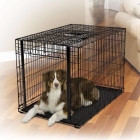
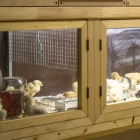
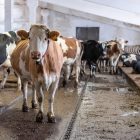
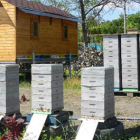
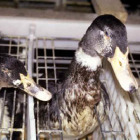
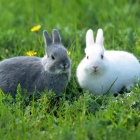

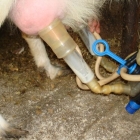
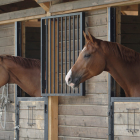
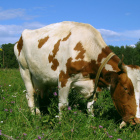
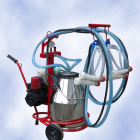
 Start a discussion ...
Start a discussion ...